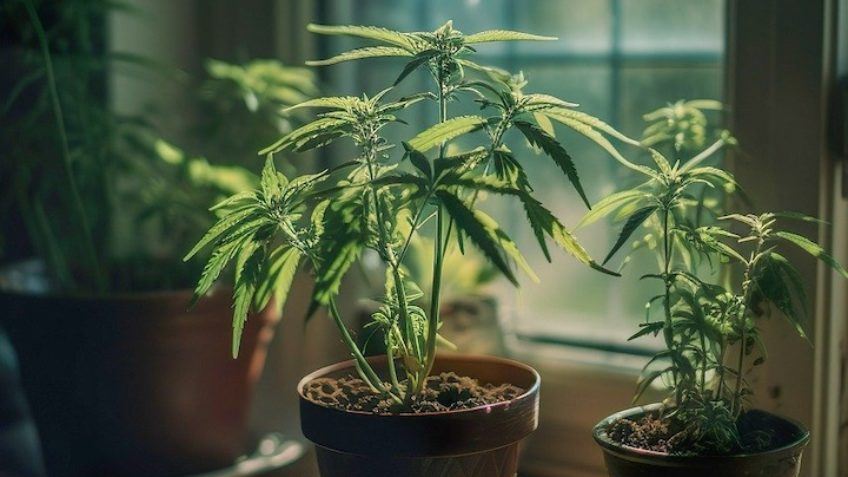
Brazil may also allow it if it follows Alexandre de Moraes’ suggestion of decriminalizing the possession of up to 6 plants per person, writes Anita Krepp
Since 2021, when New York signed the legalization of all uses of cannabis, self-cultivation was already authorized, but within a strong law full of those types of details that were easy to put in place and difficult to get off the paper. In other words, until now, home cultivation had not gained much importance. Last week, regulators finally discussed and approved the rules that outline the contours of this new right.
The right to grow your own marijuana is still a thorny issue in Brazil, but it has been becoming normalized in several other countries, such as Germany, which has been preparing the full legalization of marijuana for at least 3 years. There, legislators considered it essential to include the right to self-cultivation, which has already been authorized and should come into force from April this year.
The practice of home cultivation of marijuana for harvesting flowers and extracting oil is already carried out in at least 15 nations, including Uruguay, Argentina, South Africa, Peru, Canada and 19 US states. This discussion, therefore, has already reached the world and needs to be strengthened here. No regulation will be complete if it excludes this possibility.
It sounds ridiculous to want to ban boldo cultivation, right? Now, imagine if boldo had medicinal properties to treat epilepsy, autism, glaucoma, cancer, chronic pain, and hundreds of other diseases? Boldo, like marijuana, if consumed in high doses, can cause unwanted symptoms. Its consumption is also contraindicated for pregnant women, but even so, it flourishes freely in our grandmothers’ gardens.
IS SELF-CULTIVATION COMING?
Best bet cannabis In Brazil, bill 399 of 2015 does not include self-cultivation, otherwise, according to the project’s rapporteur, Luciano Ducci, it would not have the slightest chance of being approved.
Even though Brazil seems not to be ready for this proposition, getting closer to it by debating the models that are already in operation in other countries is a way of being prepared for what, sooner or later, is coming. After all, Thais also did not expect that, from life imprisonment, the government would start to allow and even encourage self-cultivation, distributing more than 1 million marijuana plants overnight, in June 2022.
It may even be that, around here, self-cultivation is not as far away as it seems. The minister of the STF (Supreme Federal Court), Alexandre de Moraes, defended, when voting in favor of the decriminalization of possession of marijuana for personal use, that the home cultivation of up to 6 plants should also be decriminalized. This is the current model in Colombia and Chile, where, despite not being regulated, the planting of cannabis for personal use –widely spread among the population– does not constitute a crime.
The advantages of cannabis grown at home are noticeable at first glance. It makes access cheaper and more popular, mainly for patients accustomed to importing or buying at a pharmacy, in addition to allowing greater customization and control over the product, even though, in practice, the Canadian experience shows that only 10% of drug users cannabis they consume the herb or its by-products from plants grown at home. I say and repeat: cannabis It’s a big enough market for all possibilities to coexist.
LEAVING THE GREENHOUSE
To be frank, we must recognize that the practice of home cultivation of cannabis grows every day. In addition to the approximately 5,000 habeas corpus currently issued, guaranteeing the protection of growers against police raids, there are thousands of other growers practicing gardening illegally. It’s unbelievable, but illegal gardening exists and has fostered a million-dollar market in Brazil.
O boom of the grow shops has been showing market growth similar to that of headshops (tobacco shops with paraphernalia for the use of marijuana) have had in the last 10 years, and should continue to grow. Alone, Growpro, the main input store for growing cannabis of Brazil, earns R$8 million to R$10 million annually.
Foreign brands of inputs for planting cannabis, such as Biobizz and Advanced Nutrients, are expanding their operations in Brazil, as they have also noticed the growth in demand, which rose sharply in 2020, during the pandemic. There are some Brazilian brands that cope with the international offer, such as Smart Grow, which generates around R$20 million between distribution and retail of liquid nutrients per year.
Between the hunger of users who want to pay less for their therapeutic or medicinal marijuana and the desire of entrepreneurs to eat their solutions for growers with more or less experience, self-cultivation is becoming a future that, despite being so possible, is already present. We just need to expand access possibilities and expand education about gardening.
Source: https://www.poder360.com.br/opiniao/nova-iorquinos-e-alemaes-no-caminho-do-autocultivo-de-maconha/

